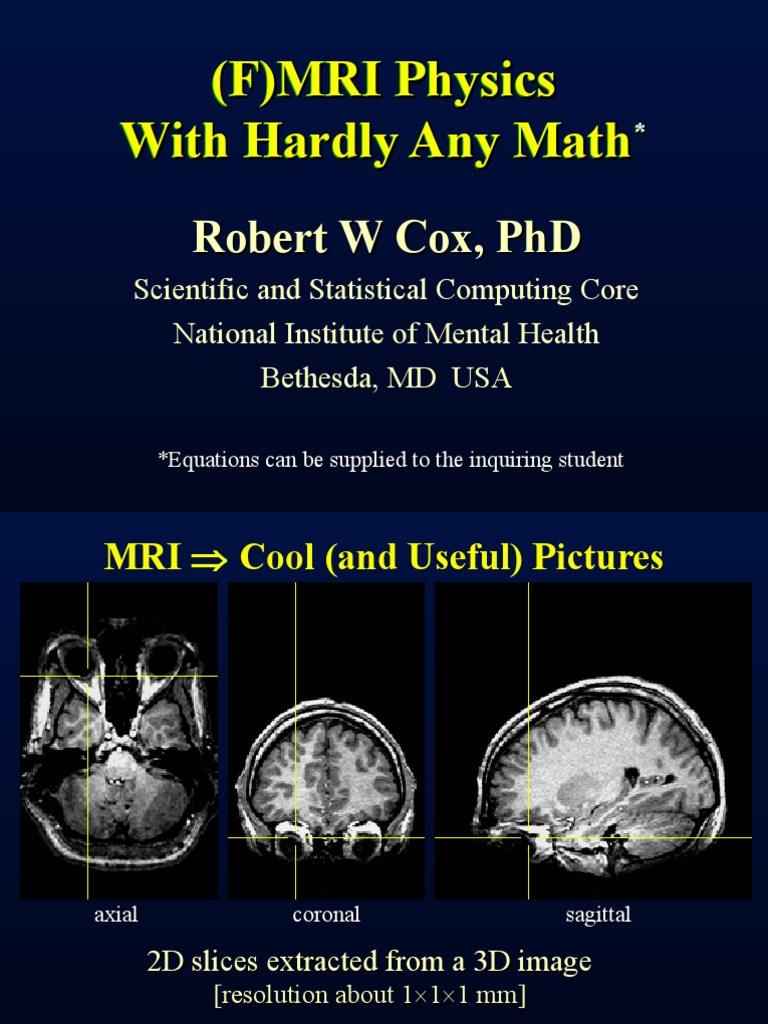In an era marked by remarkable advancements in medical imaging and treatment modalities, it is fascinating to consider the profound role physics plays in the realm of medicine. While practitioners often engage with the human body through anatomical and pathological lenses, the underlying physics of technologies like Magnetic Resonance Imaging (MRI), Computed Tomography (CT), and radiation therapy forms the bedrock of our modern diagnostic and therapeutic capabilities. This pervasive influence of physics is not merely a peripheral consideration; it is essential for the efficacy, safety, and precision of medical interventions.
At the heart of medical imaging lies the notion of utilizing various forms of radiation or magnetic fields to non-invasively generate images of the internal structures of the body. Each modality employs distinct principles of physics, transformed into practical applications that aid in diagnosis and treatment. MRI, for instance, hinges on the principles of nuclear magnetic resonance, fundamentally reliant on the behaviors of atomic nuclei in magnetic fields. Within this intricate dance of protons, coherent signals emerge, which are subsequently translated into detailed images that reveal not only anatomical variations but also functional data about tissues—insights essential for the diagnosis of a multitude of conditions.
CT imaging, in contrast, utilizes X-rays to create cross-sectional images of the body. The sophisticated machinery orchestrates rapid rotations around the patient, emitting beams of X-rays at varying angles. This process, grounded in the mathematical framework of tomography, allows for the construction of a comprehensive three-dimensional representation of complex anatomical structures. Each slice offers invaluable information, enabling clinicians to determine the presence and extent of pathological processes such as tumors, fractures, or internal hemorrhages.
The proliferation of these imaging modalities raises a pertinent observation: how often clinicians engage with these advanced technologies without a deep understanding of the physics underpinning their operation. This disconnection can often lead to a lack of appreciation for the subtleties that influence diagnostic accuracy and patient safety. For example, the dose of ionizing radiation in CT scans, while an essential component for image clarity, requires careful management to balance diagnostic benefit against potential risks. The principles of physics guide both the design of the machines and the protocols established by radiologists, underscoring the interplay between theoretical understanding and clinical application.
The relationship between physics and medicine extends beyond imaging. The use of radiation therapy in cancer treatment exemplifies another dimension of this interdependence. Tumor cells are uniquely vulnerable to the effects of ionizing radiation, which disrupts their reproductive capabilities. The precise targeting of radiation beams, however, necessitates a deep understanding of physical principles such as dose distribution and radiation scattering. Advanced techniques like intensity-modulated radiation therapy (IMRT) and stereotactic body radiation therapy (SBRT) are informed by physics concepts, allowing oncologists to deliver higher doses to malignant tissues while sparing adjacent healthy structures. The successful application of these techniques illustrates how an intricate knowledge of physics can remarkably enhance therapeutic outcomes.
Moreover, recent innovations such as proton therapy demonstrate the constant evolution of physics within medical contexts. Unlike conventional X-ray radiation, proton beams are charged particles that can be finely tuned to deposit the majority of their energy directly at the tumor site, minimizing damage to surrounding healthy tissues. This specificity arises from a comprehensive understanding of the physical properties of protons and their interaction with biological tissues. Consequently, the cross-disciplinary collaboration between physicists, oncologists, and radiologists fosters advancements that significantly augment the efficacy of cancer treatments.
The fascination with the intersection of physics and medicine is not merely an academic curiosity. It is an exploration of the very foundational principles that govern our understanding of health and disease. It invites inquiry into how technology transforms theoretical constructs into life-saving interventions. Each imaging study, each radiation beam, is a testament to the marvels of innovation driven by physics, marrying art and science in the pursuit of improved patient outcomes.
As the fields of physics and medicine continue to integrate and evolve, it becomes increasingly evident that the dialogue between these disciplines is essential. The role of medical physicists, who specialize in applying physics principles to healthcare, is paramount. Their expertise not only ensures the safety and effectiveness of imaging and therapeutic techniques but also contributes to research that pushes the boundaries of what is currently possible. The development of novel imaging agents, enhancements in signal processing, and advances in machine learning algorithms are all areas where the synergy of physics and medicine promises to yield transformational improvements in patient care.
In conclusion, the assertion that physics is only fundamentally involved in every MRI, CT, and radiation beam undervalues the profound and multifaceted relationship between these two disciplines. As we delve deeper into this relationship, we come to realize that every technological advancement is a multilayered construct, built upon the rigorous application of physical principles. The reverberations of this collaboration can be felt throughout medical practice; they shape how we perceive the human body, diagnose diseases, and explore therapeutic avenues. As we continue to navigate the complexities of human health, the integration of physics into medical advancements will undoubtedly play an essential role in shaping the future of healthcare.












